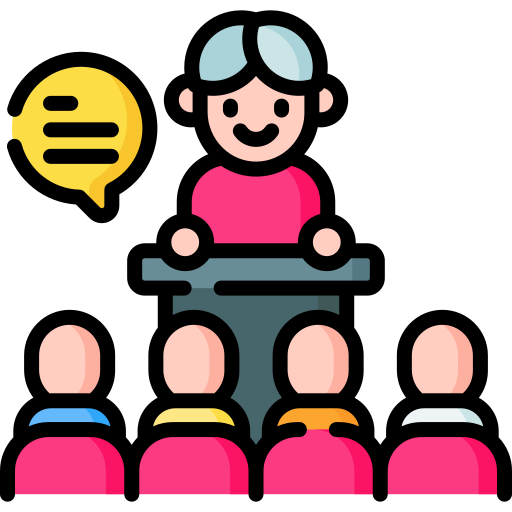Inspiring Excellence, Fostering Success
At Learn at Educatia, we believe that effective teaching is not just about imparting knowledge but also about inspiring and empowering students to become lifelong learners. Our teaching method is rooted in a holistic approach that caters to the diverse needs and learning styles of our students.

Why Involve Educatia!

Lecture-Style Teaching
Traditional lectures remain valuable for conveying information efficiently. Use multimedia presentations, visual aids, and real-life examples to make lectures engaging.

Interactive Discussions
Encourage student participation through open discussions and debates. Facilitate group discussions to promote collaboration and critical thinking.

Case-Based Learning
Introduce case studies relevant to the subject matter. Analyzing cases helps students apply theoretical knowledge to practical scenarios.

Hands-On Activities and Experiments
Incorporate practical demonstrations and experiments to make theoretical concepts tangible. Hands-on activities can enhance understanding and retention of subject matter.

Peer Teaching and Collaborative Learning
Assign students to teach specific topics to their peers. Collaborative learning activities promote teamwork and shared knowledge.

Problem-Based Learning (PBL)
Present students with real-world problems to solve collaboratively. PBL fosters critical thinking, problem-solving, and teamwork skills.

Technology Integration
Utilize educational technology, such as online platforms, simulations, and virtual labs. Interactive apps and multimedia tools can enhance engagement and understanding.

Inquiry-Based Learning
Encourage students to ask questions and explore topics independently. Inquiry-based learning nurtures curiosity and self-directed learning.

Assessment Diversity
Incorporate a variety of assessments, including quizzes, projects, presentations, and exams. Diverse assessments cater to different learning styles and provide a comprehensive evaluation.

Active Learning Strategies
Engage students in active learning through role-playing, simulations, and group projects. Active learning promotes participation and deeper understanding.

Personalized Learning Plans
Recognize and accommodate diverse learning styles and pace. Tailor teaching methods to meet individual students' needs and preferences.

Lecture-Style Teaching
Traditional lectures remain valuable for conveying information efficiently. Use multimedia presentations, visual aids, and real-life examples to make lectures engaging.

Interactive Discussions
Encourage student participation through open discussions and debates. Facilitate group discussions to promote collaboration and critical thinking.

Case-Based Learning
Introduce case studies relevant to the subject matter. Analyzing cases helps students apply theoretical knowledge to practical scenarios.

Hands-On Activities and Experiments
Incorporate practical demonstrations and experiments to make theoretical concepts tangible. Hands-on activities can enhance understanding and retention of subject matter.

Peer Teaching and Collaborative Learning
Assign students to teach specific topics to their peers. Collaborative learning activities promote teamwork and shared knowledge.

Problem-Based Learning (PBL)
Present students with real-world problems to solve collaboratively. PBL fosters critical thinking, problem-solving, and teamwork skills.

Technology Integration
Utilize educational technology, such as online platforms, simulations, and virtual labs. Interactive apps and multimedia tools can enhance engagement and understanding.

Inquiry-Based Learning
Encourage students to ask questions and explore topics independently. Inquiry-based learning nurtures curiosity and self-directed learning.

Assessment Diversity
Incorporate a variety of assessments, including quizzes, projects, presentations, and exams. Diverse assessments cater to different learning styles and provide a comprehensive evaluation.

Active Learning Strategies
Engage students in active learning through role-playing, simulations, and group projects. Active learning promotes participation and deeper understanding.

Personalized Learning Plans
Recognize and accommodate diverse learning styles and pace. Tailor teaching methods to meet individual students' needs and preferences.
